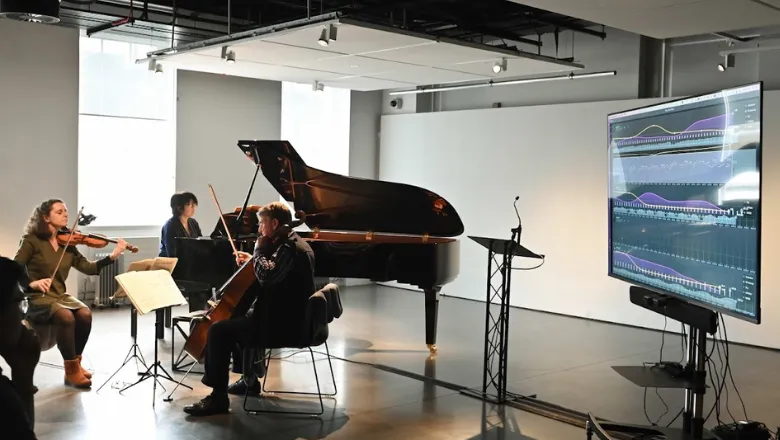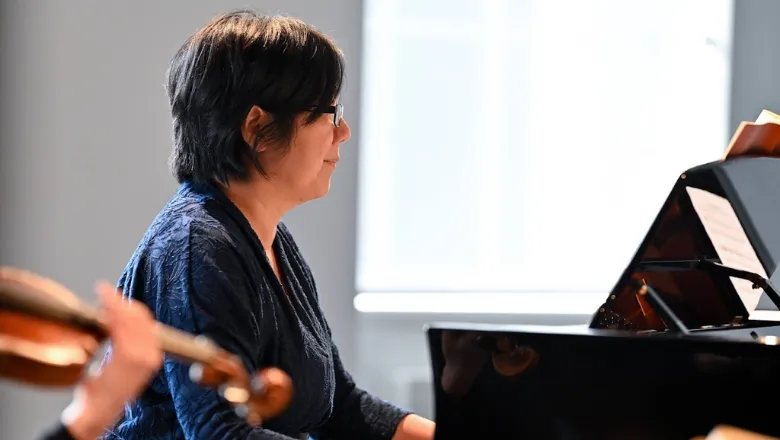Music can be heartfelt - literally it seems - as scientists have found a way to predict how playing music affects a musician's heart.

Developed by King's College London scientists, the tool bases its predictions on recorded performances and performance decisions made by the players, and accurately tracks how this impacts their heart rates through the piece, including during loud and soft moments and climaxes.
Playing loudly was shown to increase heart rate even more than playing at a faster tempo. Decisions such as when to push towards a climax, who was leading on the melody and who supported with accompaniment significantly affect heart rate. Difficult or risky passages for each musician also predicted heart rate changes - in particular for the cellist but less so for the violinist.
The study is part of a larger research project aimed at looking at music's potential to both diagnose as well as treat cardiovascular conditions. In another part of the study, the scientists track physiological signals of listeners, such as heartbeats, breathing and blood pressure whilst they listen to music to understand what music works best for treating heart conditions.

The researchers have also discovered a link between heart signals in musicians playing the piece and listeners experiencing it.
Professor Elaine Chew, engineer and professional pianist said, "performance decisions and actions have a direct impact on a player's physiology, just like when a football player takes the ball, dribbles, or shoots a goal. These decisions are hugely important not only for the players, but also in terms of how an audience experiences the music, directly impacting a listener's heart rate as well."
"Music can be prescribed to help ease certain heart conditions. Knowing how a piece is performed gives us some clues as to how a listener's heart might respond. It could even help us personalise treatment, by choosing which performance of a piece works best for a specific listener."
The experiment is the first of its kind and was conducted by Professor Elaine Chew and Dr Mateusz Soliński with findings published in Frontiers. The team collected data on the heart rates of musicians playing the Andante con moto from Schubert's Trio No. 2 nine times over five different occasions.
The pianist, violinist and cellist wore chest straps with snap-on electrocardiogram (ECG) sensors to measure their heart rate. They then compared this data with loudness and tempo features extracted from the recorded performances and the musicians' annotations of their performance decisions, developing a model that can predict musicians' heartbeats based on the recorded performance and the musicians' annotations of their actions.

Comparing the ECG readings of the players, the researchers found that the act of playing together also influenced heart rates. The players' cardiac signals were remarkably correlated, despite playing different instruments with different physical demands, moving in tandem most strongly during musical climaxes. The largest heart rate elevation was observed when multiple actions coincided. Interestingly, playing lots of notes has minimal impact on heart rate.
Dr Mateusz Soliński, a Postdoctoral Research Associate in Perception Analytics and Music Physiology, said, "It is hugely exciting to have developed a tool that through collecting some audio-signals and analysing annotations in a score can see what is happening in the body - without requiring any physiological data. We are predicting physiology without physiology."






